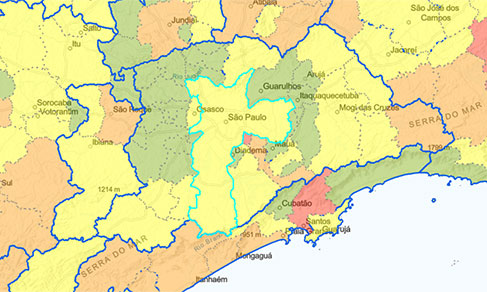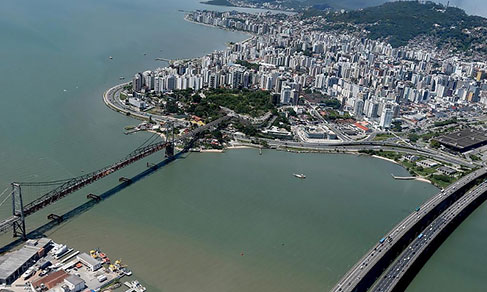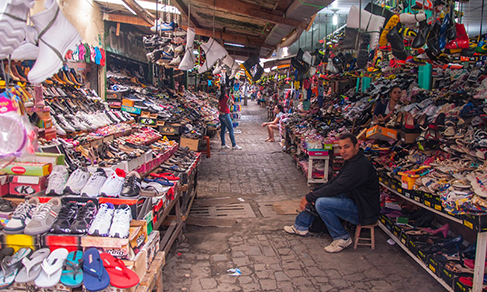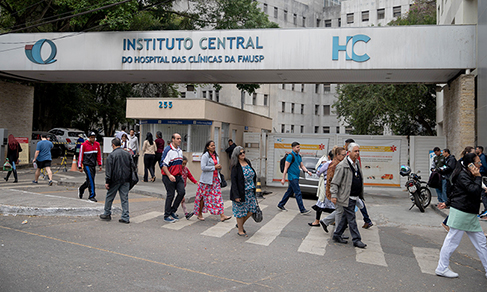Nossos serviços estão apresentando instabilidade no momento. Algumas informações podem não estar disponíveis.
Areas of Influence of Cities
Description
The survey Area of Influence of Cities - REGIC defines the hierarchy of the Brazilian urban centers and delimitates the areas of influence associated to them. It is in this survey that the Brazilian regional capitals and metropolises are identified as well as how far their spatial influence goes.
The identification of the urban hierarchy and influence areas is carried out by means of the classification of the urban centers that have certain equipment and services and that attract populations from other localities. The differentiated supply of goods and services among the cities makes populations move to well-equipped urban centers searching for health and education services or an airport, for instance. Tracing the relationships between the Brazilian cities based on the analysis of goods, services and management flows is an important tool for making choices concerning location, as the decision to where a university, a hospital or a comapany's branch should be.
About the publication - 2018 - Preliminary results
The survey Areas of Influence of Cities - REGIC defines the hierarchy of Brazilian urban centers and delimits the areas of influence associated with them. By means of this survey, Brazilian metropolises and regional capitals are identified and the spatial reach of their influence is spotted.
In order to meet the demands of the Brazilian society, which is currently facing a serious public health crisis due to the COVID-19 pandemic, the IBGE endeavors to release, in a preliminary way, the results of the survey Areas of Influence of Cities - REGIC 2018, more specifically, the results related to the behavior of the cities' network in the health care area. It is an anticipation considering the possibility of using this information to design timely public health policies in view of the need for measures to stop the spread of COVID-19 and to elaborate plans and logistics for health care in Brazilian cities.
The REGIC 2018 survey questionnaire has two questions that investigate the displacement of people from their municipalities bound for others for the purpose of accessing low, medium and high complexity health services. The results from the database of these items allow to assess the behavior of the country's urban network in the health area, contributing to the identification of health care regions and cities that concentrate health services.
In REGIC 2018 there are also two questions that investigate the displacement of people departing from their municipalities headed to others with the purpose of acquiring goods for their own consumption, such as clothing, shoes, furniture, appliances and electronics. The results from the database of these items allow to grasp the behavior of the country's urban network in its most elementary dimension: the search for basic consumer goods, contributing to the identification of attractive cities for commerce and urban centers that function as commercial hubs for the products defined by the survey. In view of the repercussions of the COVID-19 pandemic, changes will probably occur in the patterns of the flow of goods and trade in the territory, as well as in the economic impact in the Cities that constitute commercial centers.
The publication of the full results of the REGIC 2018 survey, with detailed information about the Brazilian urban network, is scheduled for launch in 2020.
More on the product - 2018 - Preliminary results
Database
- REGIC Health - COVID 19 -Preliminary Results - Relational Database
- REGIC Health - COVID 19 -Preliminary Results - Graph Base
- REGIC Trade - COVID 19 -Preliminary Results - Relational Database
- REGIC Trade - COVID 19 -Preliminary Results - Graph Base
Documentation
- Read me- Description of files' structures
- Technical Notes - Survey Areas of Influence of Cities – information on health care flows
- Technical Notes - Survey Areas of Influence of Cities – information on trade flows
Interactive panels
Learn more - 2018 - Preliminary results
Downloads
News and Releases
IBGE surveys portray the Brazilian urban network for nearly six decades
The Brazilian Institute of Geography and Statistics releases this Monday the publication Regions of Influence...
16/12/2024
New module of the Interactive Geographic Platform calculates road, waterway and air distances between Brazilian municipalities
Starting today (Dec 6th), the IBGE will make available the reference base for road, waterway and air...
06/12/2022
IBGE launches interactive dashboard to help municipalities fight the pandemic
The IBGE launches today (21) the Covid-19 Dashboard by Municipality, with interactive maps that enable...
21/09/2020
REGIC 2018: Campinas/SP, Florianópolis/SC and Vitória/ES are now among the 15 Metropolises of the Country
Campinas/SP, Florianópolis/SC and Vitória/ES are now counted among the current 15 Metropolises. With...
25/06/2020
Campinas, Florianópolis and Vitória are the New Brazilian Metropolises
Between 2008 and 2018, Brazil had three new metropolises and 32 cities made into regional capitals in...
25/06/2020
Survey shows how people used to move around to go shopping before the pandemic
The IBGE releases today (21) the survey Areas of Influence of Cities (Regic) 2018 – Information on Trade...
21/05/2020
To prevent the spread of Covid-19, IBGE anticipates data on population access to health care
The IBGE anticipated for the Ministry of Health and the Oswaldo Cruz Foundation (Fiocruz) information...
07/04/2020
Errata
Change in the description of two variables in the "REGIC 2018 - Cities" database and change of a record in the "REGIC 2018- Population Arrangements" database of the Areas of Influence of Cities 2018
Published date: 09/10/2020
Description:
The description of the "REGIC 2018 Cities" database had the description of two variables inverted: VAR02, City area, was incorrectly described as Gross Domestic Product (GDP), whereas VAR03, GDP, was described as City area. Therefore, the "description of variables" spreadsheet was amended.In the “REGIC 2018 – Population Arrangements” database, the municipality of Fortaleza de Minas (MG) was associated with the Population Arrangement of Passos/SP, when the correct name of the unit is Population Arrangement of Passos/MG. That record in the table was amended.
Actions: The REGIC 2018 - Cities and REGIC 2018 - Population Arrangements were amended and replaced in the download area of the databases of the REGIC 2018 survey.
Links
FAQ
Does the survey REGIC define metropolitan areas?
The REGIC survey does not define metropolitan areas. In Brazil, the official metropolitan areas are established by a complementary state law.
On the other hand, REGIC identifies the Metropolises, which are considered the highest hierarchical level of the urban network. The concept of Metropolis at the REGIC refers to cities with a big population, which provide a great variety of services, a position of command in comparison with other cities – for the fact of housing companies and public institutions – and that attract populations from subordinate cities in search of goods and services. The Metropolises at the REGIC survey are presented with their area of influence, which are usually much bigger than a metropolitan area.
What is the periodicity of REGIC?
REGIC is conducted every 10 years. In the intervals, other thematic surveys in the segment of Networks and Geographic Flows take place, thus enabling a partial view of the changes in the urban networks between the releases of REGIC editions. Some examples are the studies entitled Air Links, Road and Waterway Links and the survey Territory Management.
What are ACPs?
Areas of Population Concentration.










